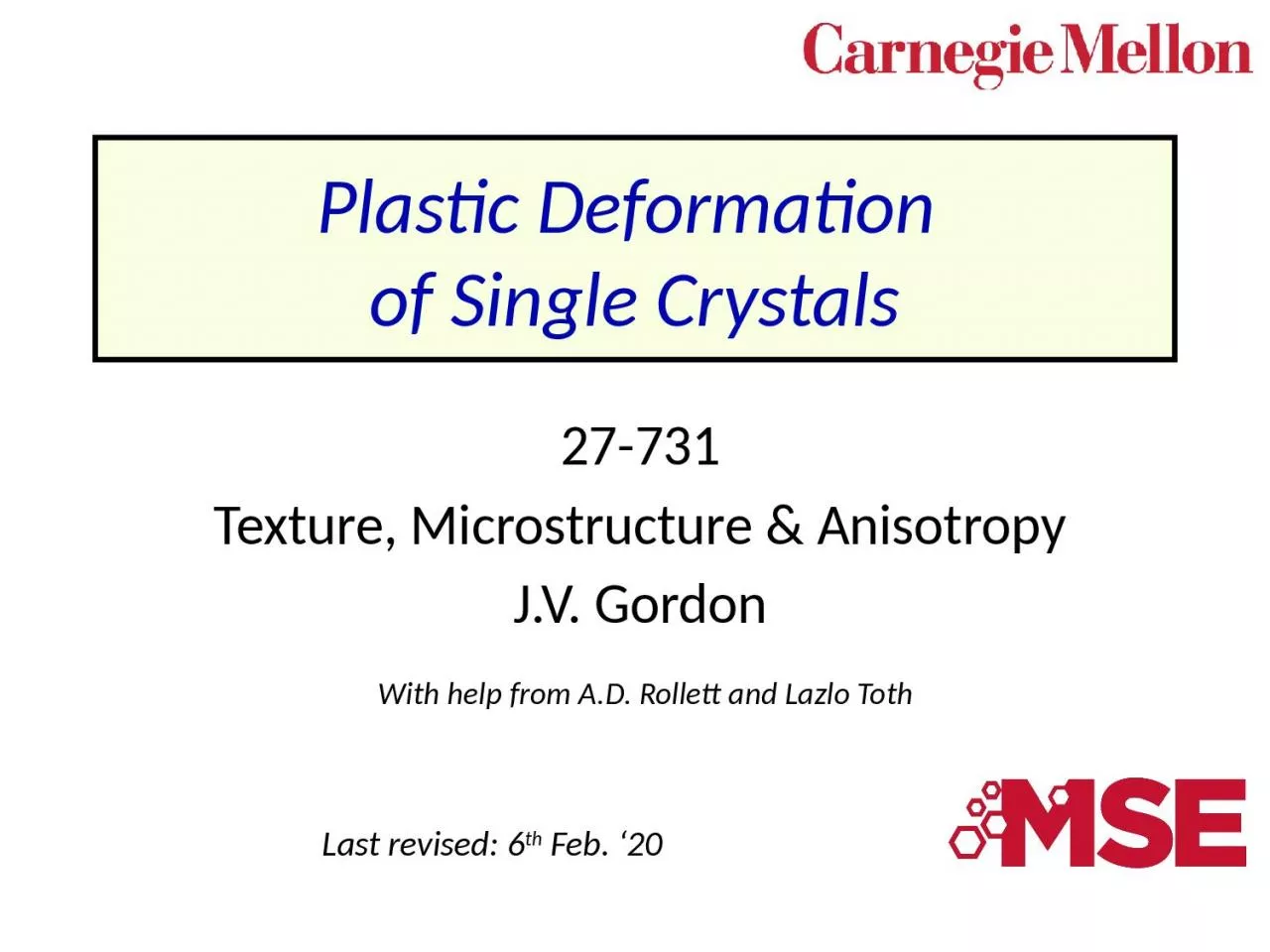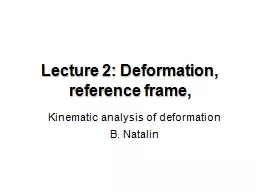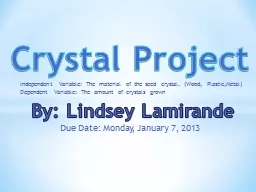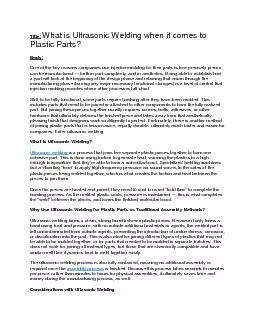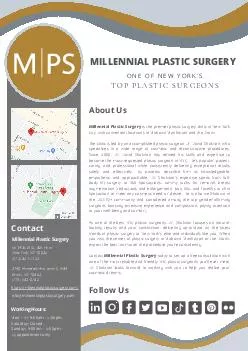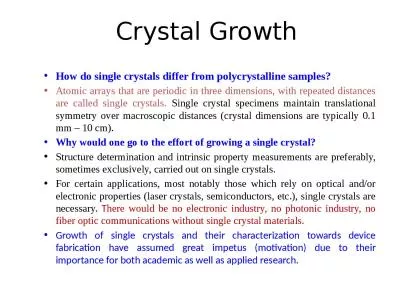PPT-Plastic Deformation of Single Crystals
Author : summer | Published Date : 2023-10-04
27731 Texture Microstructure amp Anisotropy JV Gordon With help from AD Rollett and Lazlo Toth Last revised 6 th Feb 20 2 Bibliography UF Kocks C Tomé HR Wenk
Presentation Embed Code
Download Presentation
Download Presentation The PPT/PDF document "Plastic Deformation of Single Crystals" is the property of its rightful owner. Permission is granted to download and print the materials on this website for personal, non-commercial use only, and to display it on your personal computer provided you do not modify the materials and that you retain all copyright notices contained in the materials. By downloading content from our website, you accept the terms of this agreement.
Plastic Deformation of Single Crystals: Transcript
Download Rules Of Document
"Plastic Deformation of Single Crystals"The content belongs to its owner. You may download and print it for personal use, without modification, and keep all copyright notices. By downloading, you agree to these terms.
Related Documents

